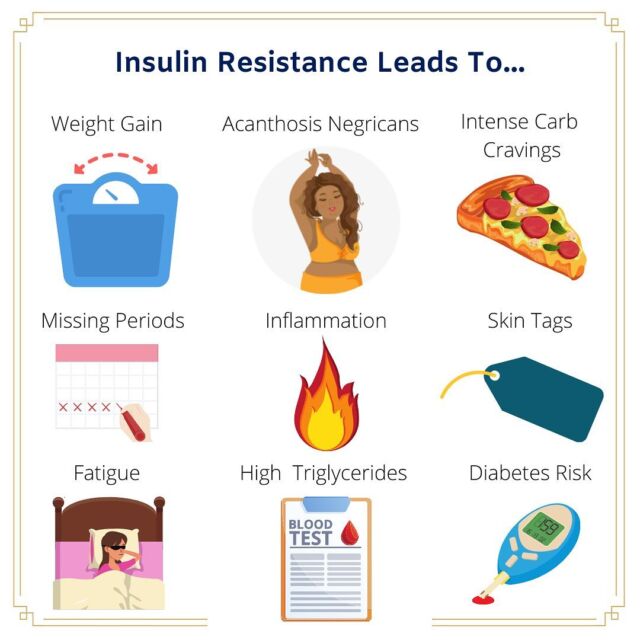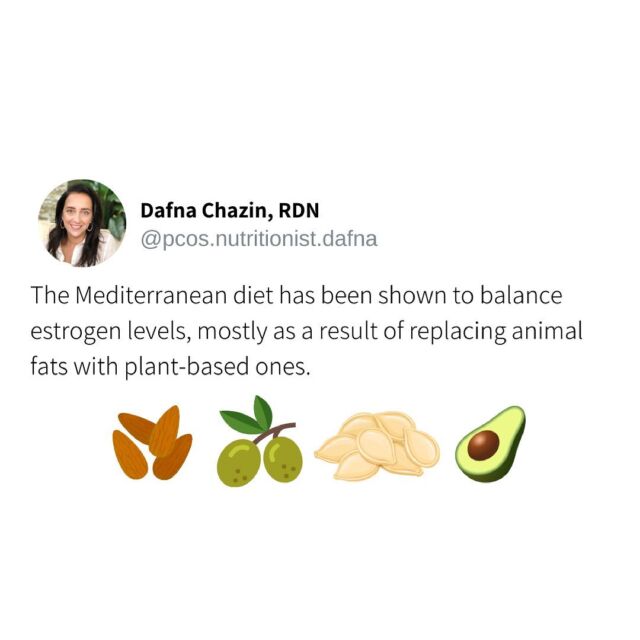Yes, you SHOULD eat carbs at every meal with PCOS. Here’s why & how
In this age of the constant peddling of diet culture, restrictive eating, fitness efforts geared towards the burning-OFF of carbs, it’s no wonder this food group constantly gets a bad rep. But there’s actually no good reason for carbs to be so heavily avoided or completely cut out of diets, especially if you have PCOS. You can eat carbs at every meal, here’s how!
Let me start by saying that going zero carb is not something I would ever advocate as a registered dietitian. Our bodies need carbs to function and our hormones rely on carbs in many ways. In fact, carbs are the main fuel for important bodily systems and organs – including our BRAIN!
Not to mention, when you eliminate carbs, you’re inevitably eating more protein foods that are high in saturated fat and less fiber – both are harmful for insulin resistance. Studies have confirmed that intake of high fat animal meat, which is rich in saturated fats, will reduce insulin sensitivity and increase inflammation.
In addition, not having enough fiber in your day will cause your body to release more insulin after meals to control your blood sugar roller coaster – this is the main cause of most afternoon energy crashes & intense cravings!
So why do we still hear that carbs are evil on social media and by various “experts”?
I believe what allows for carb misconceptions to continue is the lack of clear guidelines on how to add carbs to your day in a smart way that keeps hormones balanced and your PCOS symptoms controlled.
Today I’ll share my 3 starter tips for including carbs in your day in a way that feels easy, non-restrictive, and highly sustainable (by the way, this is part one of a 2-part series on this topic, so be sure to check back next week!).
![]()
Ready? Here we go!
1) Discover Your Unique Carb tolerance
The basic definition of carb tolerance taken from this article is the “amount of carbohydrate you can eat before your sugar levels start spiking and it causes weight gain”.1
I would add that as a woman with PCOS, eating based on your carb tolerance would also allow you to feel less cravings, have better energy levels and ultimately balance your blood sugar levels, which is the foundation of optimal hormone balance.
It’s important to know that EVERY person has a different level of carb tolerance and much of this would depend on your symptoms after carb-containing meals.
For example, say you’ve eaten a breakfast containing oatmeal, whole grain toast and a banana and you’ve felt bloated and tired within an hour of finishing to eat. This meal may have had too many carbs and exceeded your tolerance. The best way to modify it is not to eliminate carbs, but rather replace ONE carb source (e.g. banana) with a protein source (e.g. hard boiled egg).
Observing your symptoms can give you valuable information about the amount of carbs in your meals and whether it is correct for your body. Want to dive deeper into your carb tolerance? Check out this recent podcast episode.
2) Understand Carb Foods & Portion Sizes
One of the smartest ways to becoming carb-savvy is to understand which foods contain carbs & their proper portion sizes, especially if you eat these foods on a daily basis!
Many people don’t realize that carbs are found not only in pasta, potatoes, chips and crackers, they’re also in fruit, beans, some dairy and even added to salad dressings and marinade. So we do need to stay aware of ALL sources and also portion them correctly.
I would suggest that you think of the foods you eat commonly and start paying attention to their recommended serving sizes. I generally recommend starting with 2 servings of carbs per meal, aiming for high fiber carb options such as sprouted bread, lentils, beans, fruit, sweet potatoes, oats and grains such as barley and quinoa.
Once you identify the type of carb you’ll want to eat, focus on portioning it the right way (you can check the nutrition label if your food has a package!). Here’s a great resource for learning basic carb portion sizes.
For example, if you like to eat oatmeal with fruit regularly, you may want to aim for 1/3 cup dry oats with 1 cup cut up fruit – this would be proper portioning of these 2 foods!
Or, if you like pasta, aim for a cup cooked as a serving while pairing it with a protein source for blood sugar stabilization and feeling fuller for longer, which brings me to the next strategy…
3) Pair Your Carbs for Hormone Balance
Carbs don’t like being lonely! They “behave” better in your body when consumed with a source of protein and/or fat. For example, if you enjoy eating a cookie at night, it’s best to add a protein source (such as Greek yogurt) or a small amount of healthy fat (such as almonds) than eat the cookie on its own.
Pairing your carbs simply means not eating them on their own (as in a meal of baked potato or a bowl of pasta with sauce – both aren’t the best options for your PCOS symptoms!).
When you pair carbs effectively you allow your body to digest them more slowly, which creates a controlled rise in your blood sugar levels (as well as less insulin release – very important!).
Additionally, pairing carbs will help your body become more metabolically efficient and convert the fat, protein and fiber from your food into high quality energy sources!
The benefit? You feel more stable in terms of your hunger levels, mood and energy throughout the day – it’s a win-win in my book!
![]()
![]()
![]()
Let’s recap with some final thoughts on carbs and eating habits:
- Carbs are not bad! But often women think that it’s easier to cut them out completely than to figure out the best approach for their body. If that’s you, I can’t blame ya! It’s very confusing to sift through all the conflicting advice! Please know that carbs are an essential part of your diet (not to mention, delicious to eat!)
- Most women with PCOS can eat carbs at every meal. Once you follow some of the tips in this article you’ll be able to do so in an informed way that actually feels doable and sustainable for the rest of your life (since PCOS is a lifelong condition!). A great place to start is 2 servings of high fiber carbs per meal. Your goal is to include around 5-7g fiber per meal. Give it a shot!
- Hormonal balance is directly linked to sugar balance. When you include the right type and amount of carbs in your meals, you’ll be able to reduce both insulin resistance & inflammation – two of the most common drivers of PCOS! This also means you’ll have a better chance at reversing symptoms such as weight gain, fatigue, cravings, acne and irregular periods.
If you’re struggling to understand PCOS nutrition or need help creating a sustainable food plan to manage your symptoms, apply for my 3-month nutrition coaching program right here.
Reference:
1 DefeatDiabetes.com.au
Want more PCOS tips & helpful info? Check out the links below!
Join my free FB group PCOS Insiders: https://www.facebook.com/groups/pcosinsiders/
Connect with me on Instagram @pcos.nutritionist.dafna
Download my free Craving Cure Checklist for women with PCOS!
 Unsure if you have insulin resistance (IR)? W
Unsure if you have insulin resistance (IR)? W
 Just sayin’ I hope these people
Just sayin’ I hope these people
 Are you self sabotaging by waiting On motivati
Are you self sabotaging by waiting On motivati
 Did you know that certain toxins in our env
Did you know that certain toxins in our env
 Hands up for quick, balanced & delicious
Hands up for quick, balanced & delicious 
